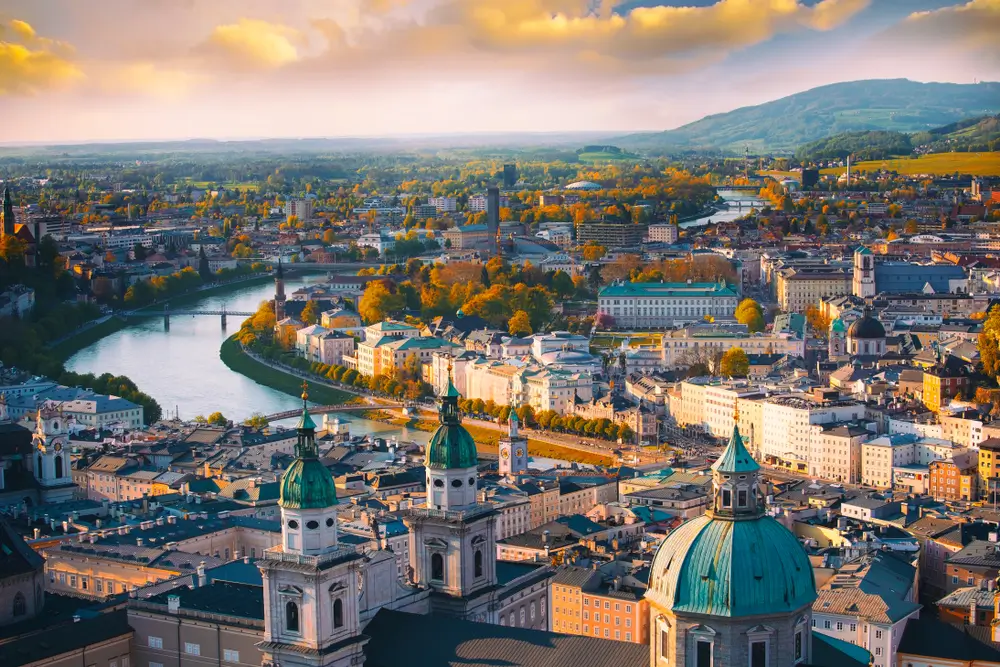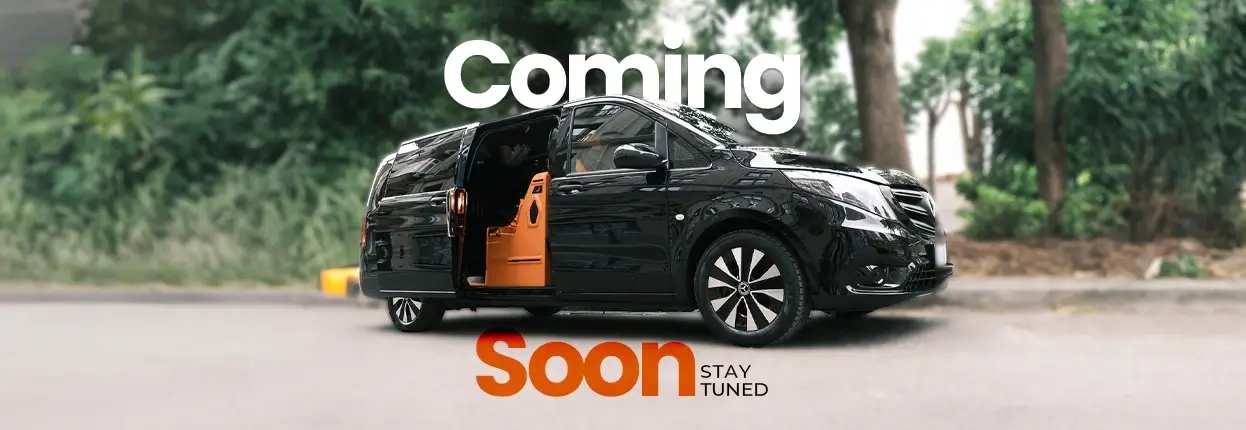Vienna
Vienna Travel Guide

Vienna is the capital and largest city of Austria and the 7th largest city in Europe. Let us tell you something, Vienna is something else. When you get there, you’ll understand why the city center was designated a UNESCO World Heritage Site. With its wide streets, surroundings, and amazing architecture, Vienna won’t let you go so easily as you’ll want more of it day by day. Everything in this city is enchanting, the buildings are vast and chic, the streets are broad, and there are lots of greens and beautifully maintained. Vienna is one of Europe's most prosperous cities and doesn’t hesitate to show! If you are a person who loves architecture, culture, art, and history, stay in Vienna as long as you can!
Things To Know Before Going To Vienna
Here are some of the important things to know before going to Vienna, Austria:
- Vienna has a lot to offer, so prioritize your activities and make the most of your time. For a weekend visit, consider focusing on the city center and main attractions.
- Central Vienna is generally very safe, but be aware of pickpocketing and petty theft in crowded areas. Keep valuables secure and be cautious of your belongings.
- Vienna has a well-organized public transportation system, including buses, trams, and subways. The metro is particularly useful for navigating the city center.
- Vienna can be expensive, so plan your budget accordingly.
- While the city center is beautiful, there are many other interesting areas to explore, such as the Vienna Woods and the Danube Canal.
- Vienna is famous for its coffee culture and traditional dishes like Wiener Schnitzel. Try local specialties and enjoy the city's culinary scene.
- Vienna is a popular tourist destination, so be prepared for crowds at popular attractions and markets.
- Vienna has its own unique customs and traditions. For example, Austrians prefer sparkling water, and elevators have specific rules for standing and walking.
Where is Vienna?
Vienna is the capital and largest city of Austria, located in the northeastern part of the country. It is on the eastern edge of the Vienna Woods, which are the northeasternmost foothills of the Alps, and it lies on the Danube River. Vienna is located in Central Europe, with easy access to other major European cities such as Rome, Paris, and London.
Where To Stay In Vienna?
Vienna has many neighborhoods and districts, each with its unique charm. The best area to stay in Vienna depends on individual preferences, budget, and travel style. Here are some popular places to stay in Vienna:
| District | Best For | Best Attractions |
|---|---|---|
| Innere Stadt | First-Time Visitors City Center | Vienna State Opera St. Stephen’s Cathedral Hofburg Palace |
| Leopoldstadt | Budget Travelers Local Culture | MuseumsQuartier Prater Park |
| Landstraße | Central Affordable | Belvedere Palace Landstraße Shopping Street |
| Mariahilf | Hip Culture Nightlife | Mariahilfer Strasse MuseumsQuartier |
| Neubau | Trendy Foodie | MuseumsQuartier Naschmarkt |
| Josefstadt | Local Residential | St. Joseph’s Church Josefstadt Market |
Best Hotels in Vienna
Hotel | District | Affordability | Why To Stay There |
|---|---|---|---|
| Hotel Bristol, a Luxury Collection Hotel, Vienna | Innere Stadt | Luxury | Historic charm and luxurious amenities |
| TOP CityLine Hotel Kaiserin Elisabet | Innere Stadt | Luxury | Imperial elegance and top location |
| Hotel Imperial Vienna | Innere Stadt | Luxury | Historic beauty and top-notch amenities |
| Hotel Sacher Wien | Innere Stadt | Luxury | Luxurious rooms and a famous café |
| Hotel Am Konzerthaus Vienna MGallery | Innere Stadt | Affordable Luxury | Prime location and luxurious rooms |
| MEININGER Hotel Wien Downtown Franz | Innere Stadt | Mid-Range | Central location and modern rooms |
| JUFA Hotel Wien | Landstraße | Mid-Range | Affordable prices and lively atmosphere |
| Boutique Hotel Donauwalzer | Donauwalzer | Mid-Range | Stylish rooms and waterfront location |
| Safestay Vienna | Landstraße | Mid-Range | Budget-friendly and lively neighborhood |
| Hotel Schild Vienna | Innere Stadt | Mid-Range | Central location and historic charm |
| Hotel KUNSThof | Leopoldstadt | Budget | Modern decorations and peaceful rooms |
| Benediktushaus im Schottenstift | Schottenstift | Budget | Silent nights and peaceful atmosphere |
| grätzlhotel Karmelitermarkt | Karmelitermarkt | Budget | Retro-cool digs and lively atmosphere |
| magdas Hotel | Belvedere Palace | Budget | Vibrant neighborhood and has good value |
| Hotel Daniel Vienna | Belvedere Palace | Budget | Unique features and urban kitchen garden |
Explore the history itself within Austria's capital. Find all cheap hotels in Vienna with just one click and book immediately!
Places To Visit In Vienna
You can get around Vienna very easily on foot and you won’t be more than 40 minutes away from any attractions except Schönbrunn Palace. There are so many Vienna attractions that you shouldn’t miss even if you’ll be there for a day or two. So, here is the list of what should be your must-see top Vienna attractions:
- The city itself: No joking here, Vienna itself is the living attraction. Explore every bit of it as much as you can, you won’t be disappointed.
- Cafe Central: A historic and iconic coffeehouse in the heart of Vienna which is always on top of the must-see places in Vienna. Known for its elegant atmosphere and delicious pastries.
- The Hundertwasser Museum: A museum dedicated to the life and work of the Austrian artist Friedensreich Hundertwasser, featuring his paintings, drawings, and architectural designs.
- Schönbrunn Palace: A stunning palace on the outskirts of Vienna, known for its beautiful gardens, ornate interiors, and history.
- The Kunstkammer: A world-renowned collection of art and artifacts, featuring objects from the fields of sculpture, painting, and decorative arts, as well as scientific and historical artifacts.
Is Vienna Safe?
Vienna is considered a very safe city for tourists. It has a low crime rate, with rare violent crimes and a high number of police officers and regular patrols, making it one of the safest capitals in the world. The city is also safe for solo travelers, women, and families. However, as with any large city, it is advisable to take care, especially in busy areas and on public transport, and to be aware of your surroundings, particularly at night.
Is Vienna Expensive To Visit?
Vienna is generally less expensive compared to major cities like London. Prices for various items, such as coffee, beer, wine, and food, vary but are generally reasonable. Travel expenses and entertainment costs, including entrance tickets to attractions and theater shows, also vary but can be managed by comparing options for more cost-effective experiences, particularly in tourist areas. Also, remember that depending on the activities you want to do and the season you’re going to Vienna can impact your available budget as hotel rates may be higher than usual during the peak season.
Vienna Currency
Vienna, like the rest of Austria, uses the Euro as its official currency. There are numerous currency exchanges and banks across the city where money can be exchanged for Euros. However, it is recommended to carry some cash, as debit cards and major credit cards (American Express, Visa, Mastercard) may often be accepted, but smaller shops and cafés might only accept cash payments.
Vienna Language
The official language in Vienna and Austria is German. Austria is one of the three big German-speaking countries, along with Germany and Switzerland. There are many differences between German and Austrian German, but these differences are generally just particular words. The grammar and overall logic of the language are the same, and if you understand German, you will understand and be understood in Austria. In addition to German, most Austrians understand English at least to some extent, especially in tourism-related places like major attractions, hotels, and restaurants, where the staff speak English fluently in most cases. The signs and written information are often stated in two languages: German and English. English is the number one foreign language Austrians learn and speak, but you may come across people who understand at least basic Spanish, French, or Italian too.
Vienna Time Zone
Vienna is in the Central European Time (CET) zone, which is Coordinated Universal Time (UTC) +1. During Daylight Saving Time, Vienna switches to Central European Summer Time (CEST), which is UTC+2.
How Many Days To Visit Vienna?
It is generally recommended to spend at least three days in Vienna to see a few museums and the main sights of Vienna. Spending three days in Vienna is a good experience to discover the city's rich history, music, and culture. However, if you have more time, staying longer would be better for more in-depth exploration, including the possibility of taking day trips to nearby destinations like Salzburg, Bratislava, or Melk Abbey. Additionally, having extra time enables a more relaxed Vienna trip, as you can enjoy the city's coffeehouse culture and visit more museums and attractions. So, three days may be enough to cover the main highlights, but a longer Vienna stay would offer a more comprehensive exploration of the city.
When Is The Best Time To Stay In Vienna?
The best times to visit Vienna are from April to May and September to October. The mild weather in spring and fall brings fewer crowds, making it an ideal time to explore the city. Summer, between June and August, is popular but can be crowded and pricey. December sees a surge in tourism due to the Christmas markets, but chilly temperatures can be an obstacle. January to May is less chaotic, with fewer crowds and a chance to visit museums and attractions without long lines. Fall, from September to November, has good weather, fewer crowds, and better Vienna hotel rates.
What To Pack For Your Visit To Vienna?
For summer trips to Vienna, prioritize lightweight and breathable clothing along with essential items like sunscreen, sunglasses, and a hat or cap to shield from the sun. Also, you must have comfortable walking shoes as you’ll explore the city on foot most likely, and consider bringing along an umbrella or light rain jacket for unexpected showers.
For winter visits to Vienna, pack warm layers such as a heavy coat, sweaters, and thermal wear, along with accessories like a scarf, gloves, and hat. Don't forget waterproof and insulated boots, as well as an umbrella or waterproof jacket for rainy days.
For spring and fall, go for layered clothing suitable for varying temperatures, a light jacket or sweater, comfortable walking shoes, and an umbrella.
Vienna Food
Vienna's culinary scene has been influenced by various cultures, including Italian, Hungarian, and French cuisines. The city offers food for all preferences, snacks, meals, vegetables, or desserts, Viennese cuisine will leave you satisfied. Here are some of the must-eat Vienna foods:
- Wiener Schnitzel: A classic Viennese dish consisting of a breaded and fried veal cutlet.
- Tafelspitz: A traditional boiled beef dish, often served with potatoes, horseradish, and a variety of veggies.
- Spargel: A seasonal delicacy, also known as white asparagus, which is often served with hollandaise sauce and potatoes.
- Erdäpfelsalat: A simple yet delicious potato salad made with boiled potatoes, onions, and a vinaigrette.
- Sachertorte: A famous Viennese chocolate cake, made with a rich chocolate sponge, apricot jam, and a dark chocolate glaze.
- Beuschel: A dish made with veal or beef lung, onions, spices, and a creamy sauce, often served with dumplings or potatoes.
- Brettljause: A traditional Austrian platter featuring a variety of cold cuts, cheeses, and veggies, often served with bread and mustard.
- Martinigans: A popular dish consisting of roasted goose or duck, often served with red cabbage and dumplings.
- Belegte Brote: Delicious open-faced sandwiches, often featuring a variety of toppings like meats, cheeses, and veggies.
- Vienna Sausage: A tasty snack, featuring small, thin sausages that are often served with a bread roll and mustard.
Also, when visiting Vienna, be sure to explore the city's local breweries, vineyards, and chocolate shops.
Vienna Nightlife
The most popular Vienna bars are in the old First District, in an area around St. Rupert's Church known as the Bermuda Dreieck (Bermuda Triangle). Other districts with fewer tourists include the Spittelberg area, around Amerlinghaus. A crazy party scene can be found on The Gürtel. Under this subway, there are some of the best bars and clubs in the city, offering dizzying live music, DJs, and dancing. Here are some popular nightlife spots in Vienna:
- Celeste: A club with a unique interior and a spacious garden, attracting a range of local DJs and hosting regular karaoke and jazz nights.
- Loos American Bar: An art deco bar known for its stylish ambiance and a wide selection of drinks.
- WhyNot: A popular spot for those looking to dance into the early hours, offering a mix of music genres and a lively atmosphere.
- Kaffee Alt Wien: A traditional Viennese café that transforms into a bar at night, serving a variety of drinks in a cozy setting.
- Donau: A club known for its all-night parties, offering a diverse range of music and a lively dance floor.
- Grelle Forelle: A club located under the subway arches, offering live music, DJs, and a vibrant atmosphere.
- Flex: A well-known club with one of the best sound systems in Europe, hosting a variety of music events and parties.
- Gürtel bars: The Gürtel area is home to a variety of bars and clubs, offering a wide range of music and entertainment options.

